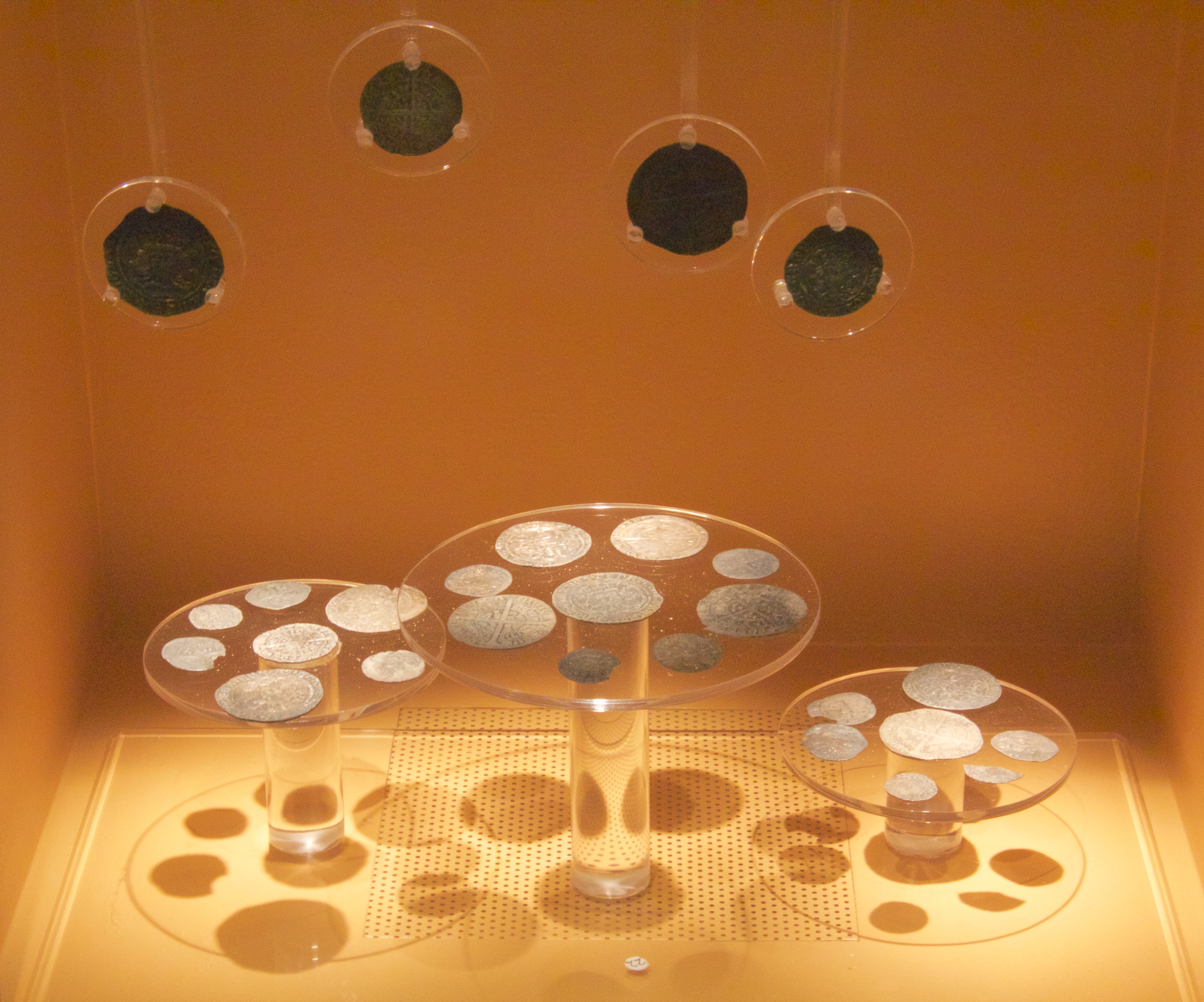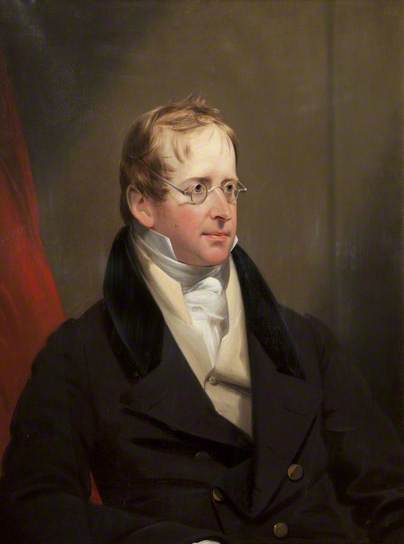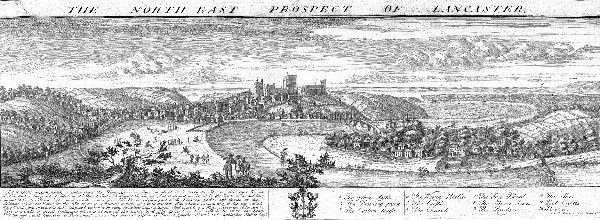|
Clitheroe Castle Museum
Clitheroe Castle Museum is located in Clitheroe, Lancashire, England, in the former Steward's House, a Grade II listed building that was built in the 18th century to house the steward of Clitheroe Castle. It is a museum showing the history of the local area. History The museum was originally opened in 1954 in the Steward's Gallery, later moving to the Steward's House. The Clitheroe Castle Museum underwent a £3.5-million refurbishment and redevelopment and re-opened on 23 May 2009. It was officially opened on 23 June 2009 by Prince Richard, Duke of Gloucester. As part of the redevelopment, a cafe and shop were added adjacent to the museum, and the Steward's Gallery was also refurbished as an exhibition area. The museum was named as a "Quality Assured Visitor Attraction" by VisitEngland in November 2009. The museum is owned by Ribble Valley Borough Council and operated by the Lancashire County Council. The museum is now located below the keep, and it charges only for adults ... [...More Info...] [...Related Items...] OR: [Wikipedia] [Google] [Baidu] |
Mitton Hoard
The Mitton Hoard is a hoard of silver coins found near Clitheroe in Lancashire, England, in 2006 or 2009. The hoard is now in Clitheroe Castle Museum. The documented treasure consisted of 11 silver coins or parts of coins. Local history Mitton is divided into two villages, Great Mitton and Little Mitton. This find was first detected to the west of Great Mitton between the River Hodder and the River Ribble. The find was near a bend in the River Hodder. One source says that these coins were found in 2006 whilst another says that the coins were found using a metal detector on Monday 7 September 2009. The treasure was declared to be treasure and it was obtained by the museum services. The hoard is now on display in the Clitheroe Castle Museum. The hoard The hoard can be dated from the date of the last coin that was included in the hoard and this came from the 1420s. Three of the coins were the oldest and they dated to the reign of Edward I or Edward II. The English silver is 97.5 ... [...More Info...] [...Related Items...] OR: [Wikipedia] [Google] [Baidu] |
Clitheroe
Clitheroe () is a town and civil parishes in England, civil parish in the Ribble Valley, Borough of Ribble Valley, Lancashire, England; it is located north-west of Manchester. It is near the Forest of Bowland and is often used as a base for tourists visiting the area. In 2018, the Clitheroe built-up area had an estimated population of 16,279. The town was listed in the 2017 ''The Sunday Times'' report on the best places to live in Northern England, while the wider Ribble Valley, of which Clitheroe is the most populous settlement, was listed in the 2018 and 2024 ''Sunday Times'' report on the best places to live. Clitheroe and the wider Ribble Valley have also been listed as healthiest and happiest place to live in the United Kingdom. The town's most notable building is Clitheroe Castle, which is said to be one of the smallest Norman architecture, Norman keeps in Great Britain. Several manufacturing companies have sites here, including Dugdale Nutrition, Hanson Cement, Johnson ... [...More Info...] [...Related Items...] OR: [Wikipedia] [Google] [Baidu] |
Great Mitton
Great Mitton is a village and a civil parish in the Ribble Valley, Lancashire, England. It is separated from the civil parish of Little Mitton by the River Ribble, both lie about three miles from the town of Clitheroe. The combined population of both civil parishes at the 2011 census was 266. In total, Great and Little Mitton cover less than 2000 acres of the Forest of Bowland, making it the smallest township in the Forest. Historically, the village is part of the West Riding of Yorkshire, but was transferred to Lancashire for administrative purposes on 1 April 1974, under the provisions of the Local Government Act 1972. Great Mitton has an ancient church, All Hallows, an ancient manor house and a pub, ''The Three Fishes'', where in former times manorial courts were held. A second pub, ''The Aspinall Arms'', sits across the Ribble in Little Mitton. The ancient parish of Mitton took its name from the Old English, being a settlement at the ''mythe'', the confluence of the Hod ... [...More Info...] [...Related Items...] OR: [Wikipedia] [Google] [Baidu] |
Royal Academy
The Royal Academy of Arts (RA) is an art institution based in Burlington House in Piccadilly London, England. Founded in 1768, it has a unique position as an independent, privately funded institution led by eminent artists and architects. Its purpose is to promote the creation, enjoyment and appreciation of the fine arts through exhibitions, education and debate. History The origin of the Royal Academy of Arts lies in an attempt in 1755 by members of the Royal Society of Arts, Society for the Encouragement of Arts, Manufactures and Commerce, principally the sculptor Henry Cheere, to found an autonomous academy of arts. Before this, several artists were members of the Society for the Encouragement of Arts, Manufactures and Commerce, including Cheere and William Hogarth, or were involved in small-scale private art academies, such as the St Martin's Lane Academy. Although Cheere's attempt failed, the eventual charter, called an 'Instrument', used to establish the Royal Academy of ... [...More Info...] [...Related Items...] OR: [Wikipedia] [Google] [Baidu] |
Lancaster, Lancashire
Lancaster (, ) is a city in Lancashire, England, and the main cultural hub, economic and commercial centre of City of Lancaster district. The city is on the River Lune, directly inland from Morecambe Bay. Lancaster is the county town, although Lancashire County Council has been based at County Hall, Preston, County Hall in Preston, Lancashire, Preston since its formation in 1889. The city's long history is marked by Lancaster Roman Fort, Lancaster Castle, Lancaster Priory, Lancaster Priory Church, Lancaster Cathedral and the Ashton Memorial. It is the seat of Lancaster University and has a campus of the University of Cumbria. It had a population of 52,234 in the 2011 census, compared to the district, which had a population of 138,375. The House of Lancaster was a branch of the List of English monarchs, English royal family. The Duchy of Lancaster still holds large estates on behalf of Charles III, who is the Duke of Lancaster. The Port of Lancaster and the 18th-century Lancas ... [...More Info...] [...Related Items...] OR: [Wikipedia] [Google] [Baidu] |
Mechanics Institute
Mechanics' institutes, also known as mechanics' institutions, sometimes simply known as institutes, and also called schools of arts (especially in the Australian colonies), were educational establishments originally formed to provide adult education, particularly in technical subjects, to working men in Victorian-era Britain and its colonies. They were often funded by local industrialists on the grounds that they would ultimately benefit from having more knowledgeable and skilled employees. The mechanics' institutes often included libraries for the adult working class, and were said to provide them with an alternative pastime to gambling and drinking in pubs. Many of the original institutes included lending libraries, and the buildings of some continue to be used as libraries. Others have evolved into parts of universities, adult education facilities, theatres, cinemas, museums, recreational facilities, or community halls. Few are still referred to as mechanics' institutes, ... [...More Info...] [...Related Items...] OR: [Wikipedia] [Google] [Baidu] |
Lancaster City Museum
Lancaster City Museum is a museum in Lancaster, Lancashire, England. It is housed in the former Lancaster Town Hall building in Market Square. History The Old Town Hall building in which the museum is housed is recorded in the National Heritage List for England as a designated Grade II* listed building. It was designed by Major Thomas Jarrett and built between 1781 and 1783, with a cupola added in 1782 to a design by Thomas Harrison. It was extended in 1871 and 1886. In 1910, the functions of the Town Hall were transferred to a new building in nearby Dalton Square. The old Town Hall was converted into a museum in 1923. The building is a two-storey structure built from sandstone ashlar, fronted by a projecting tetrastyle Tuscan portico. The façade presents five bays with round-arched windows and, in the centre under the portico, a round-arched door at the top of a set of four steps. The cupola surmounting the building has a square base with a second octagonal stage on th ... [...More Info...] [...Related Items...] OR: [Wikipedia] [Google] [Baidu] |
William Woodhouse (artist)
William Arnold Woodhouse (1857–1939) was an English artist. His life and creative work Woodhouse was born in Poulton le Sands, later the seaside town of Morecambe in Lancashire developed around this village. His parents also came from the same village. In 2001 one resident of Poulton discovered that Woodhouse had lived in his house in Poulton Road and there is now a wall mural on that house "as part of the Poulton Heritage Mural Trail". In 1892 after his marriage Woodhouse moved into a house in Chatsworth Road named Kenilcote. This house was designed by artist and featured in his oil painting ''The Reaper''. In 1902 he and his wife moved again, this time into Auburn Court which was also a rural setting which inspired him in his work. He specialized in animal portraits in the tradition of Landseer and was often praised for his artistic skill and realism. However, because he rarely travelled outside Lancashire, he did not achieve the full success or fame he deserved and is now ... [...More Info...] [...Related Items...] OR: [Wikipedia] [Google] [Baidu] |
Morecambe
Morecambe ( ) is a seaside town and civil parish in the City of Lancaster district of Lancashire, England, on Morecambe Bay, part of the Irish Sea. In 2011 the parish had a population of 34,768. Name The first use of the name was by John Whitaker (historian), John Whitaker in his ''History of Manchester'' (1771), when he refers to the "æstury of Moricambe". It next appears four years later in ''Antiquities of Furness'', where the bay is described as "the Morecambe Bay, Bay of Morecambe". That name is derived from the Roman name ''Moriancabris Æsturis'' shown on maps prepared for them by ''Claudius Ptolemœus'' (Ptolemy) from his original Greek maps. At this distance in time it is impossible to say if the name was originally derived from an earlier language (e.g. Celtic language) or from Greek. The Latin version describes the fourth inlet north from Wales on the west coast of England as Moriancabris Æsturis. Translated, this gives a more accurate description than the present ... [...More Info...] [...Related Items...] OR: [Wikipedia] [Google] [Baidu] |
Coat Of Arms
A coat of arms is a heraldry, heraldic communication design, visual design on an escutcheon (heraldry), escutcheon (i.e., shield), surcoat, or tabard (the last two being outer garments), originating in Europe. The coat of arms on an escutcheon forms the central element of the full achievement (heraldry), heraldic achievement, which in its whole consists of a shield, supporters, a crest (heraldry), crest, and a motto. A coat of arms is traditionally unique to the armiger (e.g. an individual person, family, state, organization, school or corporation). The term "coat of arms" itself, describing in modern times just the heraldic design, originates from the description of the entire medieval chainmail "surcoat" garment used in combat or preparation for the latter. Roll of arms, Rolls of arms are collections of many coats of arms, and since the early Modern Age centuries, they have been a source of information for public showing and tracing the membership of a nobility, noble family, a ... [...More Info...] [...Related Items...] OR: [Wikipedia] [Google] [Baidu] |
English Civil War
The English Civil War or Great Rebellion was a series of civil wars and political machinations between Cavaliers, Royalists and Roundhead, Parliamentarians in the Kingdom of England from 1642 to 1651. Part of the wider 1639 to 1653 Wars of the Three Kingdoms, the struggle consisted of the First English Civil War and the Second English Civil War. The Anglo-Scottish war (1650–1652), Anglo-Scottish War of 1650 to 1652 is sometimes referred to as the ''Third English Civil War.'' While the conflicts in the three kingdoms of England, Kingdom of Scotland, Scotland and Kingdom of Ireland, Ireland had similarities, each had their own specific issues and objectives. The First English Civil War was fought primarily over the correct balance of power between Parliament of England, Parliament and Charles I of England, Charles I. It ended in June 1646 with Royalist defeat and the king in custody. However, victory exposed Parliamentarian divisions over the nature of the political settlemen ... [...More Info...] [...Related Items...] OR: [Wikipedia] [Google] [Baidu] |
Roundhead
Roundheads were the supporters of the Parliament of England during the English Civil War (1642–1651). Also known as Parliamentarians, they fought against King Charles I of England and his supporters, known as the Cavaliers or Royalists, who claimed rule by absolute monarchy and the principle of the divine right of kings. The goal of the Roundheads was to give to Parliament the supreme control over executive branch, executive administration of England. Beliefs Most Roundheads sought constitutional monarchy in place of the absolute monarchy sought by Charles; however, at the end of the English Civil War in 1649, public antipathy towards the king was high enough to allow republican leaders such as Oliver Cromwell to abolish the monarchy completely and establish the Commonwealth of England. The Roundhead commander-in-chief of the first Civil War, Thomas Fairfax, remained a supporter of constitutional monarchy, as did many other Roundhead leaders such as Edward Montagu, 2nd Earl ... [...More Info...] [...Related Items...] OR: [Wikipedia] [Google] [Baidu] |










